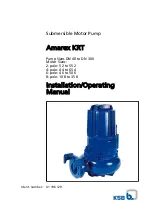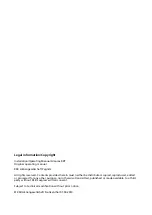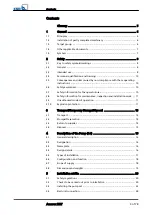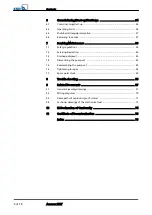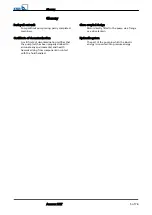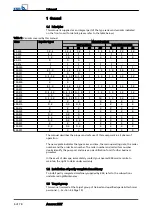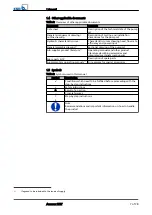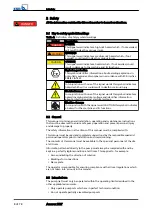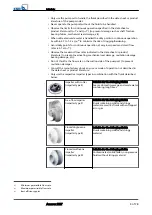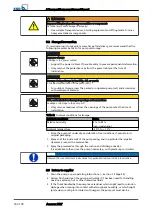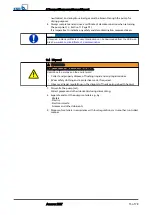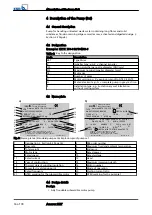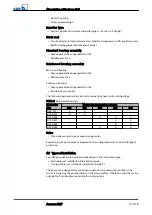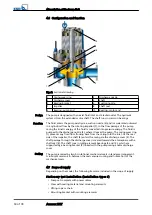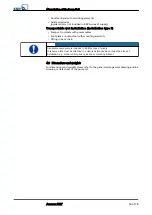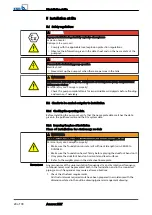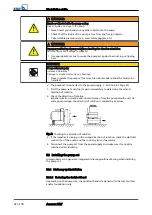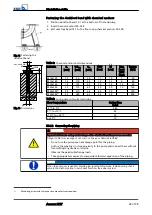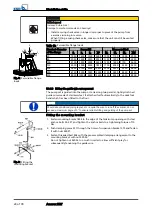
▪
Only use the pump set to handle the fluids described in the data sheet or product
literature of the pump model.
▪
Never operate the pump set without the fluid to be handled.
▪
Observe the limits for continuous operation specified in the data sheet or
product literature (Q
min
2)
and Q
max
3)
) (to prevent damage such as shaft fracture,
bearing failure, mechanical seal damage, etc).
▪
When untreated waste water is handled the duty points in continuous operation
lie within 0.7 to 1.2 x Q
opt
4)
to minimise the risk of clogging/hardening.
▪
Avoid duty points for continuous operation at very low speeds and small flow
rates (<0.7 x Q
opt
4)
).
▪
Observe the maximum flow rates indicated in the data sheet or product
literature (to prevent overheating, mechanical seal damage, cavitation damage,
bearing damage, etc).
▪
Do not throttle the flow rate on the suction side of the pump set (to prevent
cavitation damage).
▪
Consult the manufacturer about any use or mode of operation not described in
the data sheet or product literature.
▪
Only use the respective impeller types in combination with the fluids described
below.
Impeller with cutter
(impeller type S)
Suitable for the following fluids:
Faeces, domestic sewage and waste water
containing long fibres
Free-flow impeller
(impeller type F)
Suitable for the following fluids:
Fluids containing solids and stringy
material as well as fluids with entrapped
air or gas
Closed single-vane
impeller
(impeller type E)
Suitable for the following fluids:
Fluids containing solids and stringy
material
Closed multi-vane
impeller
(impeller type K)
Suitable for the following fluids:
Contaminated, solids-laden, non-gaseous
fluids without stringy material
2)
Minimum permissible flow rate
3)
Maximum permissible flow rate
4)
Best efficiency point
2 Safety
Amarex KRT
9 of 78
Summary of Contents for Amarex KRT
Page 77: ......

